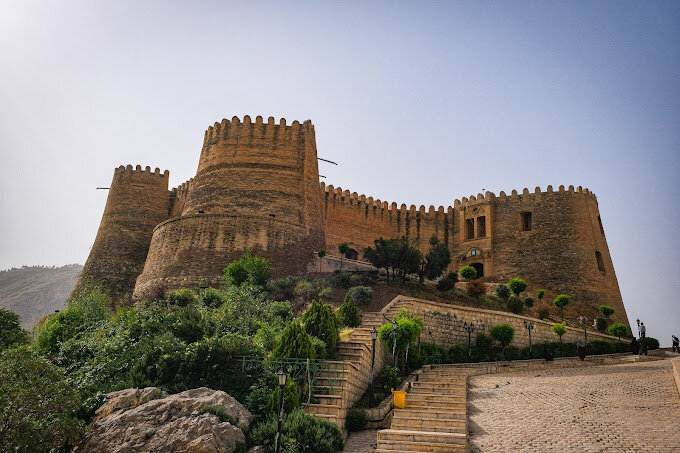INSUBCONTINENT EXCLUSIVE:
TEHRAN-- Iran has finished an extensive dossier for its Qale Falak-ol-Aflak, which is a Sassanid period (224-- 651) fortress located in
Khorramabad, the capital of Lorestan province, in a bid to nominate it for UNESCO status, the tourist minister has said.As a sign of Iranian
history, culture, and civilization, the castle is being gotten ready for possible addition in UNESCOs prestigious list, said Ezzatollah
Zarghami on Friday, while checking out the historic structure.A significant obstacle to the registration of this ancient castle was that
parts of it were at the disposal of the militaries over the last few years, the minister added.However, the issue was gotten rid of by the
governor of Lorestan and by the parliamentarians, and the militaries will be transferred to another area in the future, he explained.In
December, President Ebrahim Raisi visited the ancient fortress
He was accompanied by members of his cabinet, consisting of the Energy Minister, Industry, Mining, and Trade Minister, Agriculture Minister,
Culture Minister along with Cooperatives, and Labor and Social Welfare Minister.The unmissable eight-towered fortress dominates Khorramabad
as one of the most gone to travel destinations in the area for both domestic and foreign sightseers
The fortress appears particularly enforcing and remarkable when floodlit during the night, offering picturesque views of its surrounding
crenelated battlements.Experts believe that the fortress is equivalent with similar works in Naqsh-e Rostam, Naqsh-e Rajab, Tape Chugan, and
Firuzabad in Fars province.In 2018, UNESCO added an ensemble of Sassanian historical cities in southern Iran-- titled Sassanid
Archaeological Landscape of Fars Region -- to its World Heritage list
The ensemble is comprised of eight historical sites positioned in 3 geographical parts of Firuzabad, Bishapur, and Sarvestan
It shows the enhanced utilization of natural topography and bears witness to the impact of Achaemenid and Parthian cultural customs and of
Roman art, which later had a significant effect on the architecture and creative styles of the Islamic era.The Sassanid period is of really
high significance in the history of Iran
Under Sassanids, Persian art and architecture experienced a general renaissance
Architecture often took grandiose percentages such as palaces at Ctesiphon, Firuzabad, and Sarvestan which are amongst the highlights of the
Crafts such as metalwork and gem engraving grew extremely sophisticated, yet scholarship was encouraged by the state
In those years, works from both the East and West were equated into Pahlavi, the language of the Sassanians.Efforts made by the Sassanids
likewise yield a revival of Iranian nationalism happened, for instance, Zoroastrianism was declared the state faith
The dynasty evolved by Ardashir I and was ruined by the Arabs during the period 637 to 651
The dynasty was named after Sasan, a forefather of Ardashir I.Under his leadership who ruled from 224 to 241, the Sassanians overthrew the
Parthians and developed an empire that was constantly changing in size as it responded to Rome and Byzantium to the west and the Kushans and
Hephthalites to the east, according to Britannica Encyclopedia
At the time of Shapur I (ruled 241 CE-- 272), the empire extended from Sogdiana and Iberia (Georgia) in the north to the Mazun region of
Arabia in the south; in the east, it encompassed the Indus River and the west to the upper Tigris and Euphrates river valleys.Soaked in
history and culture, Lorestan is among the lesser-known travel locations in Iran, which generally acts as an entrance to the sweltering
plains listed below in the adjoining Khuzestan province
Lorestan is likewise an area of raw charm that an avid nature fan could invest weeks exploring.The area was occupied by Iranian
Indo-European peoples, consisting of the Medes, c
Cimmerians and Scythians intermittently ruled the area from about 700 to 625 BC.Lorestan was integrated into the growing Achaemenid Empire
in about 540 BC and successively was part of the Seleucid, Parthian, and Sassanid dynasties.ABU/ MG

